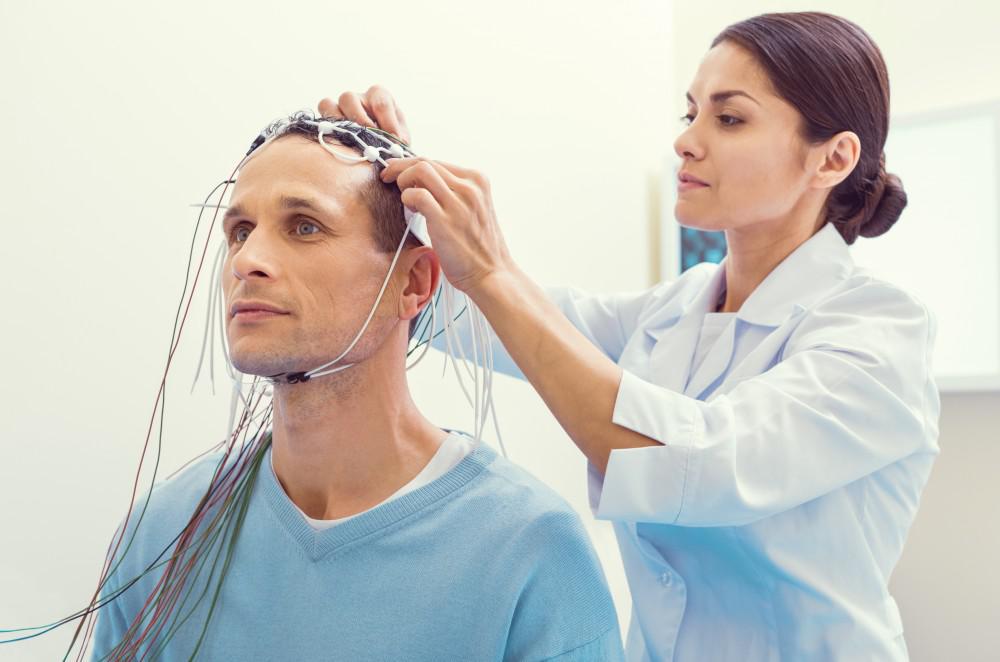
Epilepsy is a neurological disorder that affects millions of people around the world. It is characterized by recurrent seizures that can manifest in various ways, ranging from staring spells and jerking movements to loss of consciousness and convulsions. The cause of epilepsy is often unknown, but it is thought to be related to abnormal electrical activity in the brain.
One of the most common tests used to diagnose epilepsy and evaluate its severity is the electroencephalogram (EEG). An EEG is a non-invasive test that measures electrical activity in the brain using electrodes placed on the scalp. The test is painless and usually takes about an hour to complete.
The EEG is an essential tool for diagnosing epilepsy because it can detect abnormal brain activity even when the patient is not experiencing a seizure. This is important because seizures are unpredictable and may not occur during the test. The EEG can also help identify the specific type of epilepsy the patient has, which is essential for developing an effective treatment plan.
During an EEG, the patient is usually asked to lie down on a bed or sit in a chair. The technician will then attach electrodes to the patient’s scalp using a special adhesive gel. The electrodes are connected to a machine that records the electrical activity in the brain. The technician may also ask the patient to perform specific tasks, such as closing their eyes or breathing deeply, to stimulate different areas of the brain.
The EEG results are recorded as a series of waves, with each wave representing the electrical activity in a specific part of the brain. Normal EEG waves are generally regular and symmetrical, while abnormal waves may be irregular, asymmetrical, or have unusual patterns. The technician will analyze the results and compare them to a database of normal and abnormal EEG patterns to determine if the patient has epilepsy.
In addition to diagnosing epilepsy, the EEG can also be used to evaluate the effectiveness of treatment. If a patient is taking medication to control their seizures, the EEG can help determine if the medication is working by measuring the frequency and intensity of seizures. If the EEG shows that the medication is not effective, the patient’s doctor may need to adjust the dosage or try a different medication.
There are some limitations to the EEG test, however. For example, the test may not be able to detect very brief seizures or seizures that occur in deep brain structures that are not easily accessible to the electrodes on the scalp. Additionally, some patients may have a normal EEG even if they have epilepsy, so a normal result does not necessarily rule out the condition.
Despite these limitations, the EEG remains an important tool for diagnosing and treating epilepsy. It is non-invasive, painless, and provides valuable information about the electrical activity in the brain. Patients with epilepsy can expect to undergo several EEG tests over the course of their treatment, as the results can change over time and help guide the treatment plan.
In addition to the standard EEG test, there are also several specialized EEG tests that can be used to diagnose and evaluate epilepsy. These include:
- Video-EEG monitoring: This test combines video monitoring with EEG to record both the patient’s behavior and brain activity during a seizure. It can help identify the type and origin of the seizure and determine if surgery is a viable treatment option.
- Ambulatory EEG: This test involves wearing a portable EEG machine for 24-72 hours to record brain activity during the patient’s normal activities. It can help identify seizures that occur outside of the hospital or clinic setting.
- Sleep-deprived EEG: This test involves depriving the patient of sleep for a specified period before the EEG to increase the likelihood of detecting abnormal brain activity. It is often used to diagnose epilepsy in children.


